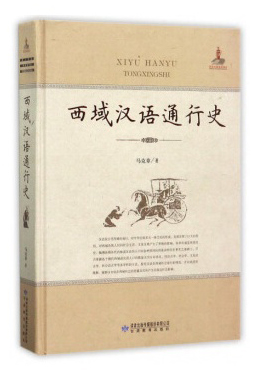Exploring Chinese language in the Western Region

Chinese Language History in China’s Western Region
The Chinese nation has formed through a historical process involving various ethnic groups in the Central Plains constantly communicating and interacting with surrounding ethnic groups. Chinese Language History in China’s Western Region presents the chronological order of China’s recorded history that has taken place over the last two thousand years. It largely consists of the social and political situations of various imperial dynasties, the westward movement of the Chinese-speaking population in each dynasty as well as their distribution and quantity there. In addition, the book takes the gradually westward movement of the Chinese language in the Western Region and the spread of Han culture in this region as the core of each chapter. Through reviewing this trend in each dynasty, the author tries to analyze the profound cultural and social impact of Han culture on the Western Region.
The author holds that during the Han Dynasty, the Chinese language became the official lingua franca in the Western Region; during the Wei, Jin, Southern and Northern Dynasties, its official linguistic status in this region was further consolidated; during the Sui and Tang Dynasties, there appeared the first climax of Chinese usage in the Western Region; during the Liao and Song Dynasties, Chinese was popular throughout the region; during the Yuan Dynasty, the use of Chinese there was essential; during the Ming Dynasty, the Chinese language was at a low ebb in the region; during the Qing Dynasty, the Chinese language in Xinjiang reached a new peak.
In the concluding part of the book, the author gives a basic understanding of the history of communication with the Chinese language in the Western Region over more than two thousand years. The Han people have always been engaged in the development of the Western Region. As the lingua franca of the region, Chinese is the only language that has never fallen out of use in its history. The modern Xinjiang dialect as a Chinese dialect has gradually formed over the last two thousand years. The widespread use of Chinese in the Western Region has brought a deep cultural and social impact in many repects.
There are many highlights in the book: First, as the author points out, the cultural exchange between various ethnic groups is a propellent for the cohesion of the Chinese nation. Second, the author analyzes the contribution of Uighurs in the Yuan Dynasty to Chinese culture and the significance of Uighur participation in social activities. The third highlight is the author’s exposition on the new peak of the Qing Dynasty’s use of the Chinese language in Xinjiang.
(edited by YANG LANLAN)
